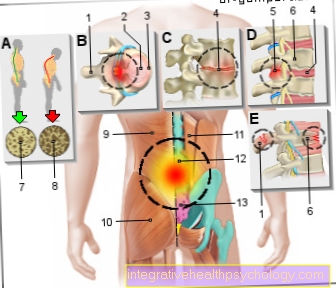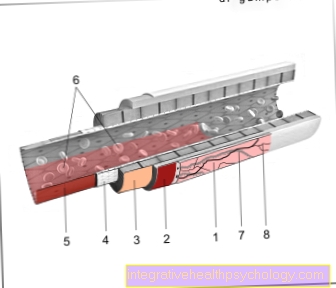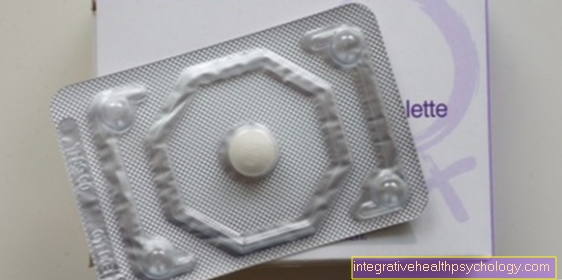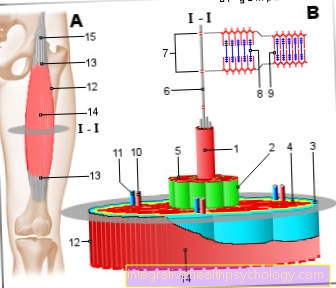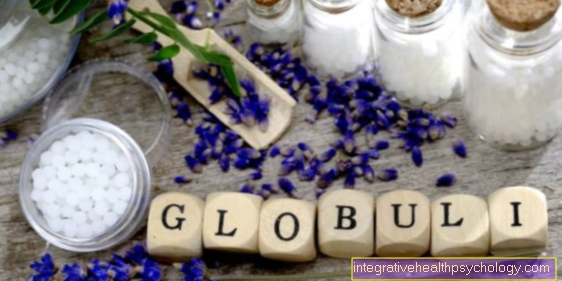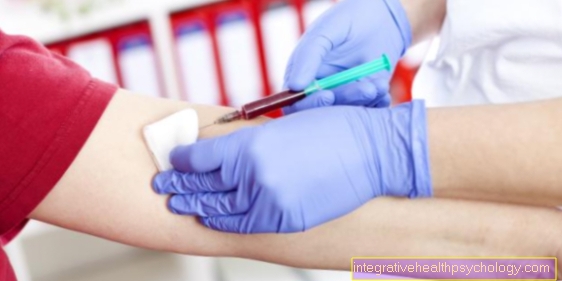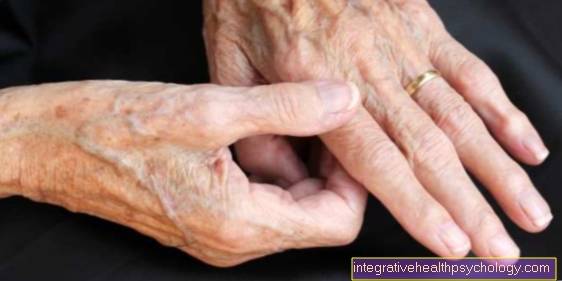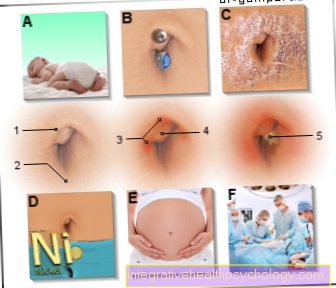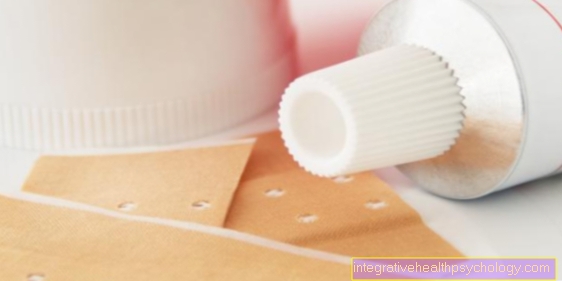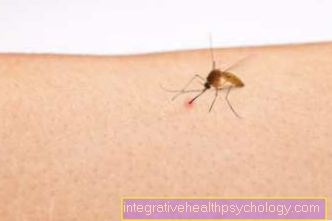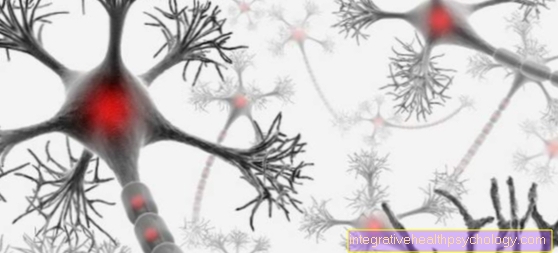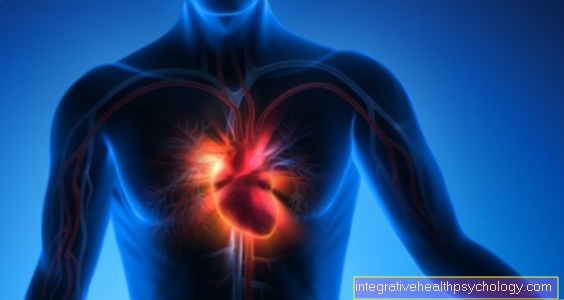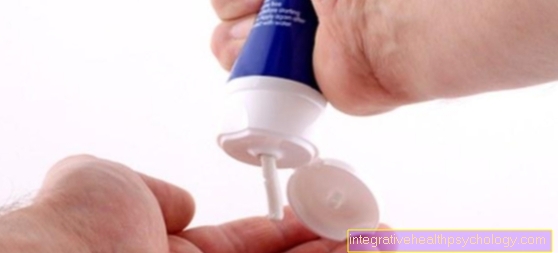Liver value GGT
What is the GGT score?
The term GGT stands for gamma-GT or also gamma-glutamyl transpeptidase or gamma-glutamyl transferase. This refers to an enzyme that is found in several organs. These include the spleen, small intestine, the pancreas, the kidneys and, above all, the liver, as there is a high turnover of amino acids here. The enzyme is membrane-bound and is involved in the transport of amino acids into the cells and initiates the breakdown of glutathione, an important molecule within the cells. The value serves as an important laboratory parameter in the diagnosis of liver diseases such as hepatitis, poisoning and diseases of the biliary tract.
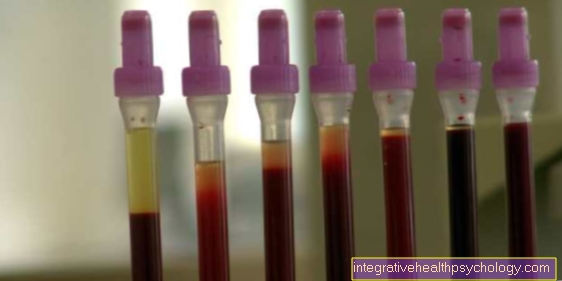
What is the normal value?
Adult men should have a GGT value below 66 U / l (units per liter). A value below 39 U / l is aimed for in adult women. Other values apply to children, depending on their age. At the end of the first year of life, values up to 25 U / l are considered acceptable.For 13 to 17 year olds the value should be below 38 U / l for women and below 52 U / l for men.
As with all laboratory parameters, there are no uniform values with regard to the reference range. This is due to the fact that the values that exist in perfect health for every person are subject to a certain fluctuation. Some people physiologically have laboratory values that are outside of the standard even though no disease is present. In addition, depending on the laboratory, there are analytical methods that produce slightly different results. Therefore, the reference range is often determined by each laboratory itself, which should be given the greatest attention in case of doubt.
Also read the article on the topic: Increased liver values
How is the GGT increased?
The GGT value, together with the GOT and GPT values, belongs to the group of transaminases. These values are typically determined when liver damage is suspected. As already mentioned, GGT is not found in the liver alone. This is the reason why an increased value does not necessarily mean a disease of the liver. One speaks of a low specificity. However, since the concentration of GGT in the blood is very low in healthy people, every increase is noticed immediately. This is called a high sensitivity.
Find out more about the topic: Liver values
Compared to the values of the GOT and GPT, the value of the GGT increases even with slight damage, as it is not located in the liver cells, but within the cell membrane. Liver diseases that cause abnormal GGT levels include viral hepatitis, which can destroy liver cells. Depending on the type (hepatitis A-E), this can be strong or weak and show acute or chronic courses. In acute, severe viral hepatitis, the liver values, like GGT, rise faster and more strongly than in chronic, less pronounced viral hepatitis.
Read more on the topic: hepatitis
In addition, the GGT value can be increased if the liver is damaged by toxins. In addition to alcohol, these poisons also include some cytostatic drugs that are used in tumor therapy, aflatoxins, a poison from a mold, ovulation inhibitors that are used for hormonal contraception, and poisons from the death cap mushroom. With some substances, such as alcohol, the effects only appear after long and massive use, whereas with other substances such as the aflatoxins, liver damage occurs more quickly. In the course of Pfeiffer's glandular fever or biliary congestion, the GGT value can also increase. A biliary obstruction does not necessarily have to be caused by the liver.
However, since the bile flows from the liver into the gallbladder and small intestine, a backflow can occur when the flow is reduced, which in turn damages the liver cells. Several organ systems are among the causes that cause an increase without being caused by the liver. For example, diabetes mellitus, so-called diabetes, a burn or a cerebral infarction can be the reason. In addition, acute pancreatitis, inflammation of the pancreas, various thyroid diseases, some muscle diseases or the regular use of certain medications can lead to an increase in the GGT value.
What drugs can increase GGT?
The main drugs that increase GGT include those drugs that are metabolized in the liver. The active ingredient alone can damage the liver cells if taken in excess. However, the breakdown can also produce substances that have a harmful effect on the liver. In addition, certain drugs can change the way some enzymes that control the metabolism of other drugs interact.
This is followed by an accumulation of these substances in the blood and the liver, which in turn has a damaging effect. In addition, some drugs that act on the cardiovascular system increase GGT. The interaction with the intracellular glutathione plays an important role here. The drugs that cause an increase in the GGT value include so-called NSAIDs (non-steroidal anti-inflammatory drugs). Furthermore, antibiotics such as amoxicillin or tetracyclines, i.e. drugs that are directed against bacteria, anti-epileptics such as diazepam or lorazepam, histamine blockers such as diphenhydramine or doxylamine and antidepressants such as amitriptyline or mirtazapine lead to increased GGT values.
Causes for a value that is too low
Since the enzyme that significantly influences the GGT value should usually not be present in the blood, a low GGT value does not have any disease value. In contrast, a low value may even indicate a healthy lifestyle. Physical activity and abstaining from alcohol are possible reasons for this. In general, all measures that damage the liver cells or protect them from possible damage are possible reasons for a low GGT value.
What is the best way to lower the GGT value?
In general, as already explained, an increased GGT value can have several causes. Therefore, if the cause is unexplained, a doctor should first be consulted, who in the best case scenario will conduct further diagnostics to determine the real reasons for the increase. If the causes now lie with the liver, several measures can be taken to effectively lower the GGT value. The focus should also be on the cause and not just on the lowering measures. Since some drugs can be liver-damaging due to their breakdown products or the active ingredient, even if they are taken for a long time, the possibility of discontinuing the drug in question should be discussed with the attending physician.
Alternatively, a drug can be used whose active ingredient or its degradation products do not have a damaging effect on the liver cells. However, if the reason is a liver disease, the focus should be on treating this disease or reducing its effects as far as possible. In the case of viral hepatitis, for example, an anti-viral drug can be used. However, this is only possible in extreme cases and not with each of the five forms A-E. If no form of intervention is available, the only thing left to do is wait, as with Pfeiffer's glandular fever.
If there is a biliary obstruction, the reason for this should be treated. This can result in different strategies depending on the type of drainage disorder. Most of the time, however, surgery is preferred because a gallstone often clogs the drainage ducts. The liver should then be checked for possible long-term damage. In response to the surgery, liver parameters usually return to normal and GGT drops to previous values. If the liver is damaged by poisons, the most effective method is to maintain normal values, so that you no longer expose yourself to the poison. As already discussed, some antibiotics such as tetracyclines can damage the liver cells, which is why other drug classes can be used as an alternative.
This should definitely be done in consultation with a doctor. Alcohol is a special case in the avoidance of poisons. If alcohol is not consumed much, it does not pose a threat to the liver cells. However, if consumed in a chronic, massive manner, alcohol can cause great damage to the liver and cause a massive increase in liver values. If a chronic consumption of alcohol is known, one should confidently consult a doctor.
Another effective measure to reduce the GGT value is to change one's lifestyle to a style that is gentle on the liver. A balanced diet with avoiding high-fat and high-sugar foods is helpful here. Weight reduction is also advisable. It is also helpful to refrain from consuming alcohol altogether and to quit smoking. Caffeine is a special case. There are different views on this. It is sometimes even claimed that caffeine has a positive effect on the liver.
Can you reduce GGT with home remedies?
The home remedies that are said to have positive effects on the liver include some everyday foods. Drinking enough fluids alone helps the liver to function. In addition, dark chocolate and caffeine, which are found in very popular foods, are said to have good effects. Furthermore, bitter vegetables such as Brussels sprouts, sage, various other herbs, which are often consumed as tea, are considered helpful. Other home remedies include artichokes, dandelions, nettles, plums, and lemon juice. To avoid fatty meat, fish or poultry, for example, can be used.
Find out more about the topic: How can I best lower my liver values?
Can you lower the GGT through homeopathy?
Since homeopathy is based on natural substances, some of which are also found in home remedies, the correct use of such remedies can have a positive effect on the GGT value. In doing so, attention should be paid to the instructions of the responsible homeopath. As with any therapy, however, the benefit often depends on the cooperation and even on the patient's belief in the success of the therapy.



